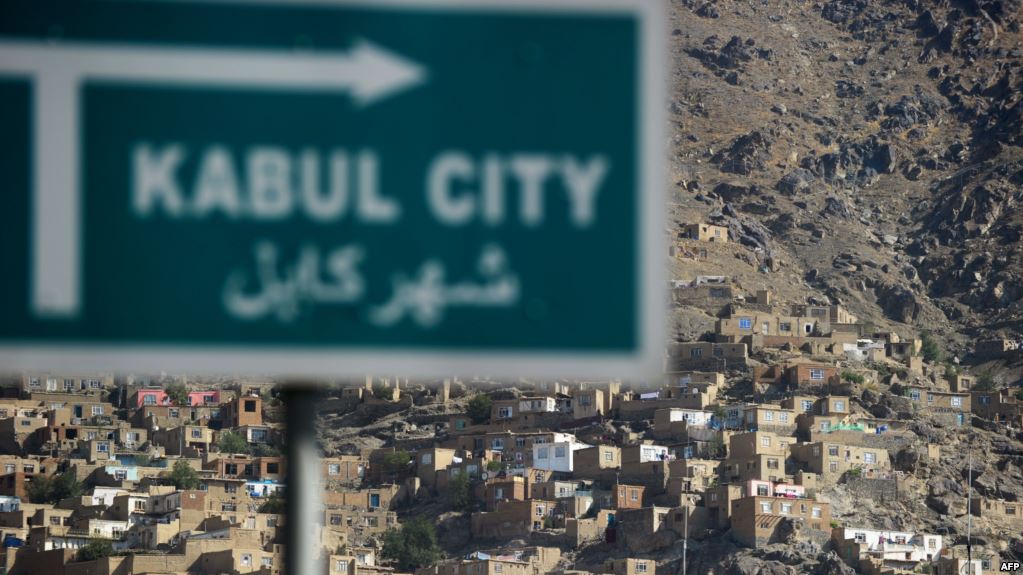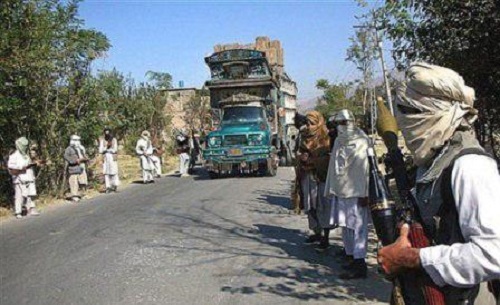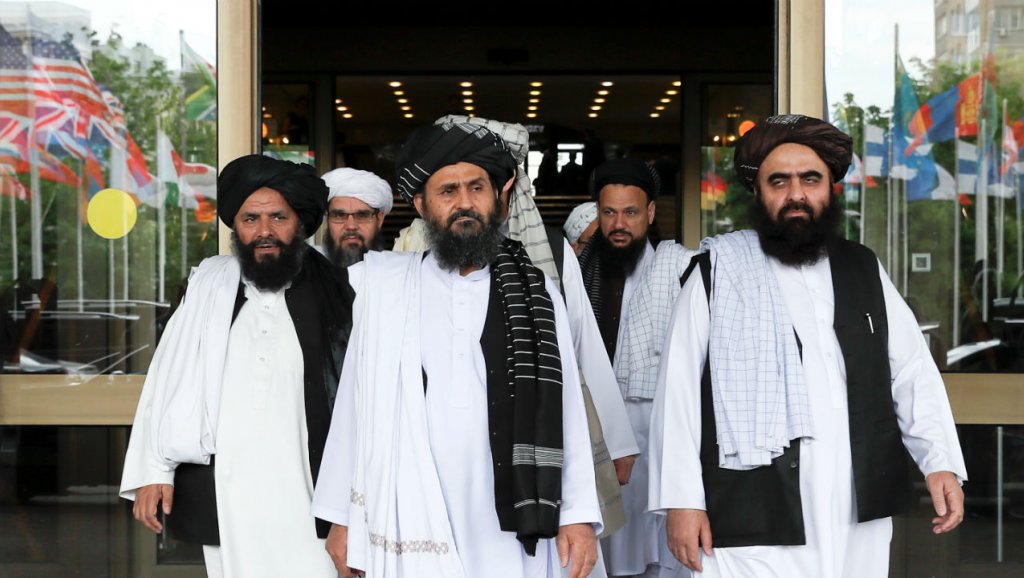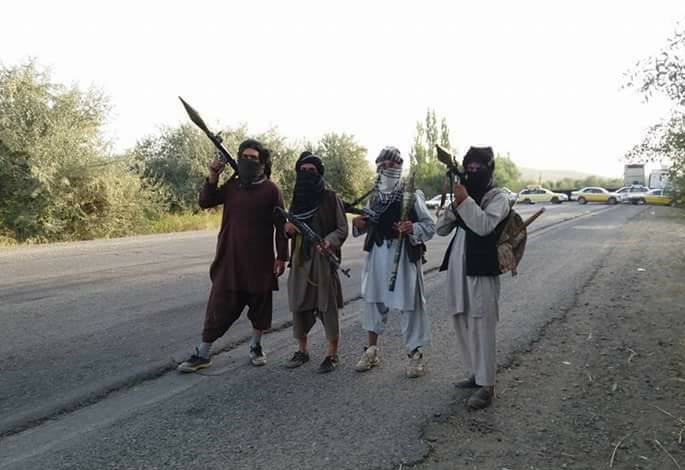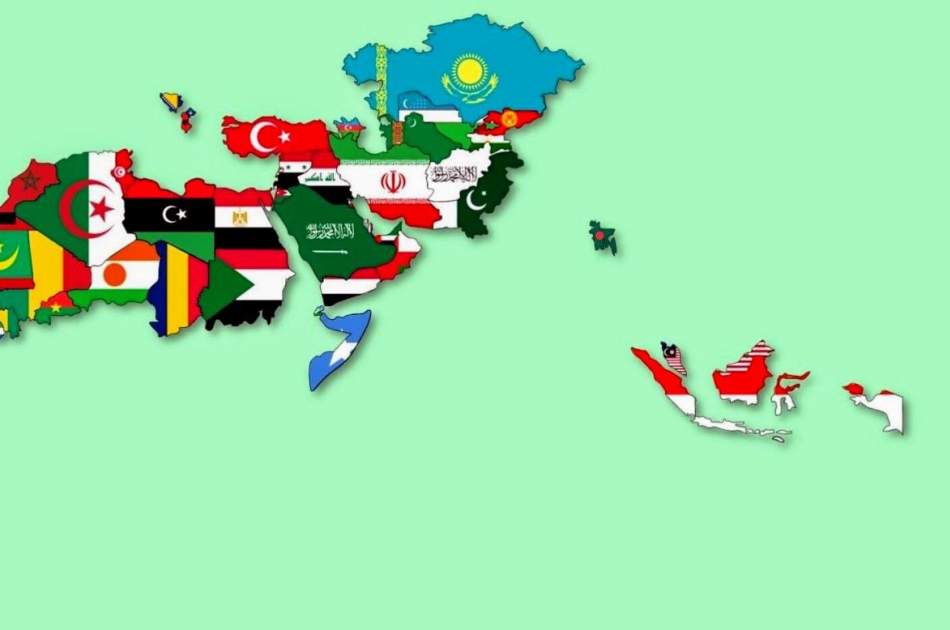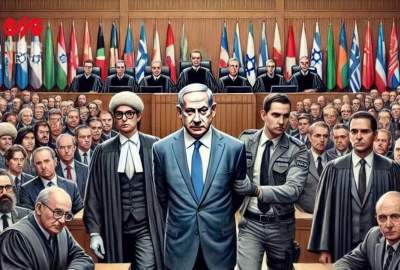“The Taliban are in the city,” Nicholson said. “So this is a process of deliberately clearing sections of the city. That’s begun.”
Publish dateThursday 15 March 2018 - 10:48
Story Code : 160098
AVA- Once seen as relatively secure, the sprawling Afghan capital of Kabul is becoming the main focus of an intensified U.S.-backed battle against the Taliban this year after a series of high-profile attacks exposed major gaps in security.
“Kabul is our main effort. To harden Kabul, to protect the people of Kabul and the international community that are here,” U.S. General John Nicholson, the top U.S. commander in Afghanistan, told a group of reporters on Wednesday.
The remarks underscored the high degree of concern about the Taliban’s intent to stage high-profile attacks in Kabul, which are aimed at undermining the Afghan government and international resolve after 16 years of war.
They are also a reminder that while U.S. and Afghan officials speak with growing confidence about the prospects of peace talks with elements of the Taliban, the military is also making long-term preparations for an extended conflict, including in the capital.
Nicholson said Kabul’s exponential growth from about 500,000 people in 2001 to 5 million today had created a haphazard sprawl that was hard to secure. U.S. intelligence agencies were helping Afghanistan map the city so police and soldiers can better design barriers and checkpoints.
“I’ll just be very candid. We have a lot of work to do,” Nicholson said.
“This growth at that rate has meant that there’s a lot of sprawl. It’s easy to get in and out of the city.”
In the past year, insurgents have staged massive bombings in the Afghan capital, including one in January that killed more than 100 people and another in May 2017 near the German embassy.
No group claimed the May 2017 attack but Afghan and U.S. officials blamed the Haqqani network, a violent militant group affiliated to the Taliban. The Taliban claimed the second attack but many officials say it bore the hallmarks of the Haqqanis, who the United States says enjoy safe haven in neighboring Pakistan.
U.S. President Donald Trump has piled pressure on Pakistan to crack down on the safehavens, announcing in January a suspension in U.S. financial assistance to Islamabad.
“BACKCHANNEL COMMUNICATION”
Nicholson said the Afghan Army were taking over at least some of the once “porous” police checkpoints inside the city, and was training specialized soldiers to stand guard.
The goal was to establish an inner-ring of security along with an outer-ring of security, and clear everything in between.
A group of newly arriving U.S. Army advisers would partner with some of the Afghan troops securing Kabul. Commandos would carry out intelligence-driven raids throughout the city, something Nicholson said was already ongoing.
The goal would be to eliminate Taliban strongholds as well as Taliban facilitators, which included criminal enterprises that, for a price, gave the insurgents shelter or weapons.
“The Taliban are in the city,” Nicholson said. “So this is a process of deliberately clearing sections of the city. That’s begun.”
Nicholson’s comments came during a trip to Afghanistan by U.S. Defense Secretary Jim Mattis, whose delegation navigated some of Kabul’s checkpoints and blast walls while moving between U.S. military and Afghan government compounds on Tuesday, helicopters buzzing overhead.
Trump approved a more aggressive strategy last year that included more U.S. combat advisers and air strikes, and fighting is expected to pick up in the coming weeks.
Mattis said on Tuesday that the United States had seen signs of interest from elements of the Taliban insurgency about talks with Kabul to end the conflict.
Nicholson echoed that, noting there was more outreach than publicly known - including through “backchannel” intermediaries.
“What you don’t see in the news of course is all the backchannel communication that’s going on at multiple levels, through the Gulf, from the Taliban leadership through various means, and so forth,” he said.
“So there’s definitely an increase in the dialogue and the communication between the sides about reconciliation. And more than I’ve seen in any of the previous times I’ve been around this.”
Still, it was unclear whether the latest prospects would prove any more fruitful than previous, frustrated attempts to move toward a negotiated end to America’s longest war.
Taliban fighters still control large parts of the country and any new battlefield gains by U.S. and U.S.-backed Afghan forces cannot promise to overcome Afghanistan’s yawning political divisions and entrenched corruption.
“Kabul is our main effort. To harden Kabul, to protect the people of Kabul and the international community that are here,” U.S. General John Nicholson, the top U.S. commander in Afghanistan, told a group of reporters on Wednesday.
The remarks underscored the high degree of concern about the Taliban’s intent to stage high-profile attacks in Kabul, which are aimed at undermining the Afghan government and international resolve after 16 years of war.
They are also a reminder that while U.S. and Afghan officials speak with growing confidence about the prospects of peace talks with elements of the Taliban, the military is also making long-term preparations for an extended conflict, including in the capital.
Nicholson said Kabul’s exponential growth from about 500,000 people in 2001 to 5 million today had created a haphazard sprawl that was hard to secure. U.S. intelligence agencies were helping Afghanistan map the city so police and soldiers can better design barriers and checkpoints.
“I’ll just be very candid. We have a lot of work to do,” Nicholson said.
“This growth at that rate has meant that there’s a lot of sprawl. It’s easy to get in and out of the city.”
In the past year, insurgents have staged massive bombings in the Afghan capital, including one in January that killed more than 100 people and another in May 2017 near the German embassy.
No group claimed the May 2017 attack but Afghan and U.S. officials blamed the Haqqani network, a violent militant group affiliated to the Taliban. The Taliban claimed the second attack but many officials say it bore the hallmarks of the Haqqanis, who the United States says enjoy safe haven in neighboring Pakistan.
U.S. President Donald Trump has piled pressure on Pakistan to crack down on the safehavens, announcing in January a suspension in U.S. financial assistance to Islamabad.
“BACKCHANNEL COMMUNICATION”
Nicholson said the Afghan Army were taking over at least some of the once “porous” police checkpoints inside the city, and was training specialized soldiers to stand guard.
The goal was to establish an inner-ring of security along with an outer-ring of security, and clear everything in between.
A group of newly arriving U.S. Army advisers would partner with some of the Afghan troops securing Kabul. Commandos would carry out intelligence-driven raids throughout the city, something Nicholson said was already ongoing.
The goal would be to eliminate Taliban strongholds as well as Taliban facilitators, which included criminal enterprises that, for a price, gave the insurgents shelter or weapons.
“The Taliban are in the city,” Nicholson said. “So this is a process of deliberately clearing sections of the city. That’s begun.”
Nicholson’s comments came during a trip to Afghanistan by U.S. Defense Secretary Jim Mattis, whose delegation navigated some of Kabul’s checkpoints and blast walls while moving between U.S. military and Afghan government compounds on Tuesday, helicopters buzzing overhead.
Trump approved a more aggressive strategy last year that included more U.S. combat advisers and air strikes, and fighting is expected to pick up in the coming weeks.
Mattis said on Tuesday that the United States had seen signs of interest from elements of the Taliban insurgency about talks with Kabul to end the conflict.
Nicholson echoed that, noting there was more outreach than publicly known - including through “backchannel” intermediaries.
“What you don’t see in the news of course is all the backchannel communication that’s going on at multiple levels, through the Gulf, from the Taliban leadership through various means, and so forth,” he said.
“So there’s definitely an increase in the dialogue and the communication between the sides about reconciliation. And more than I’ve seen in any of the previous times I’ve been around this.”
Still, it was unclear whether the latest prospects would prove any more fruitful than previous, frustrated attempts to move toward a negotiated end to America’s longest war.
Taliban fighters still control large parts of the country and any new battlefield gains by U.S. and U.S.-backed Afghan forces cannot promise to overcome Afghanistan’s yawning political divisions and entrenched corruption.
Source : خبرگزاری Afghan Voice Agency(AVA)
avapress.net/vdcdnz0fjyt09z6.em2y.html
Tags
Top hits
